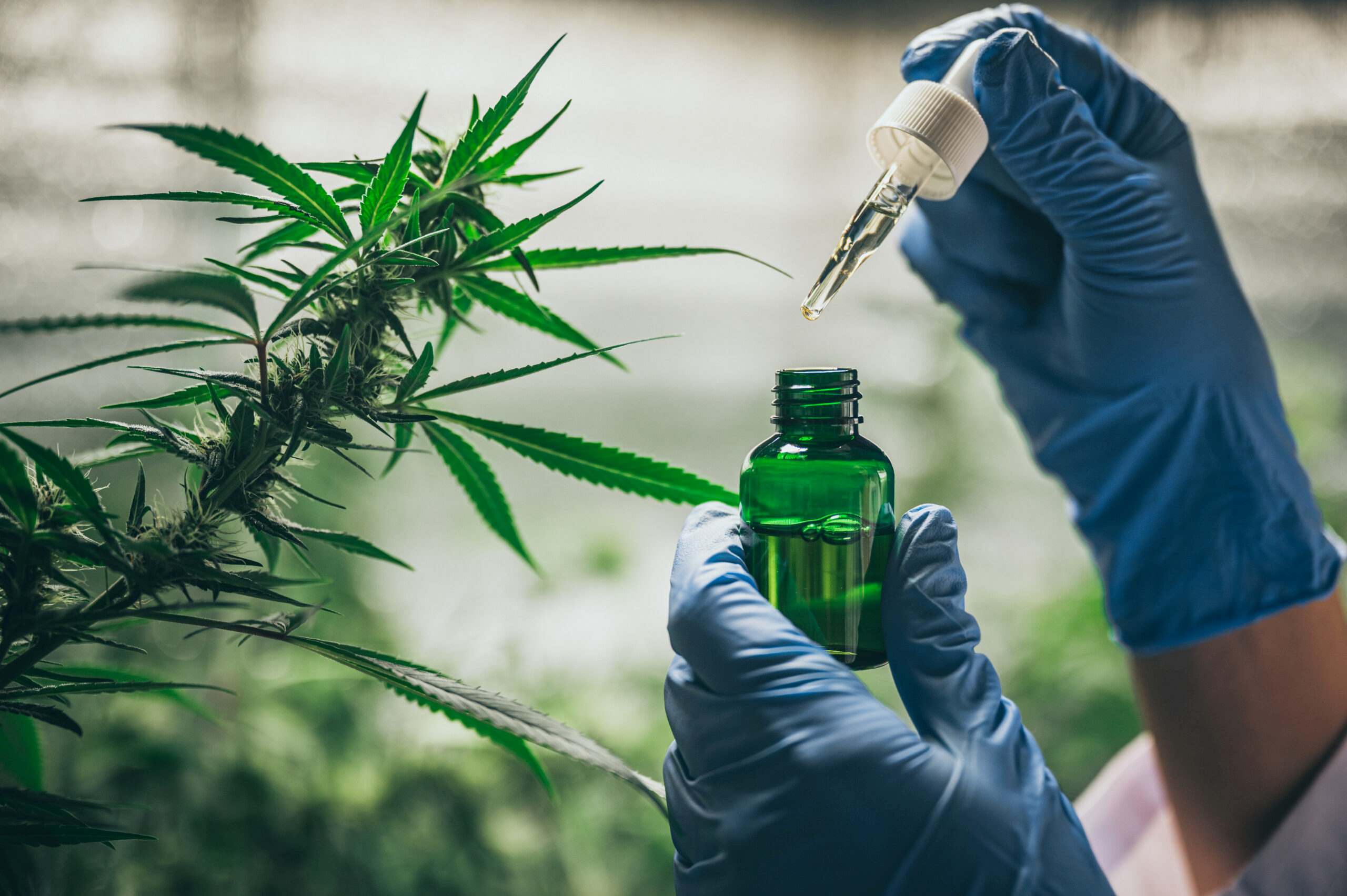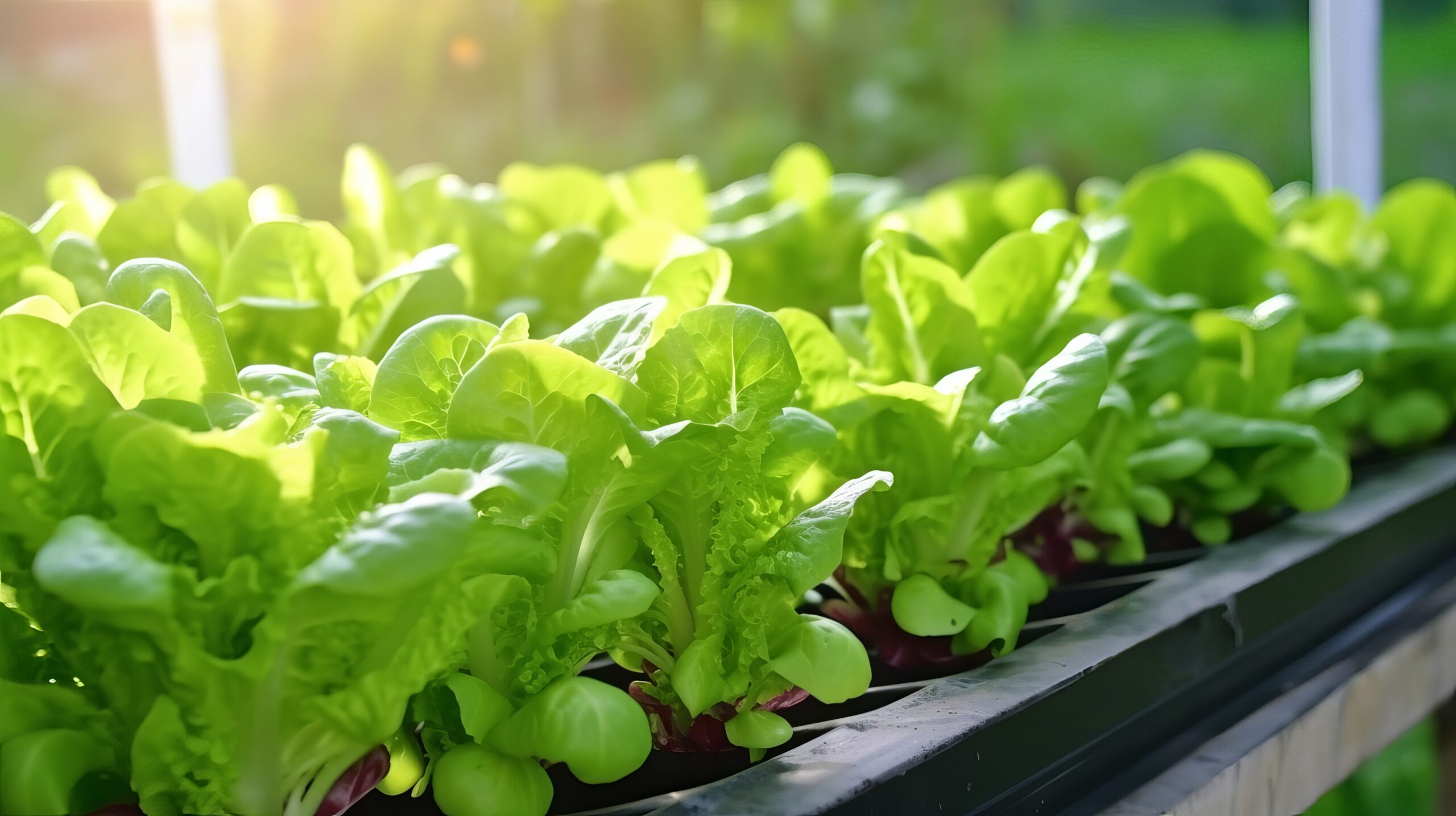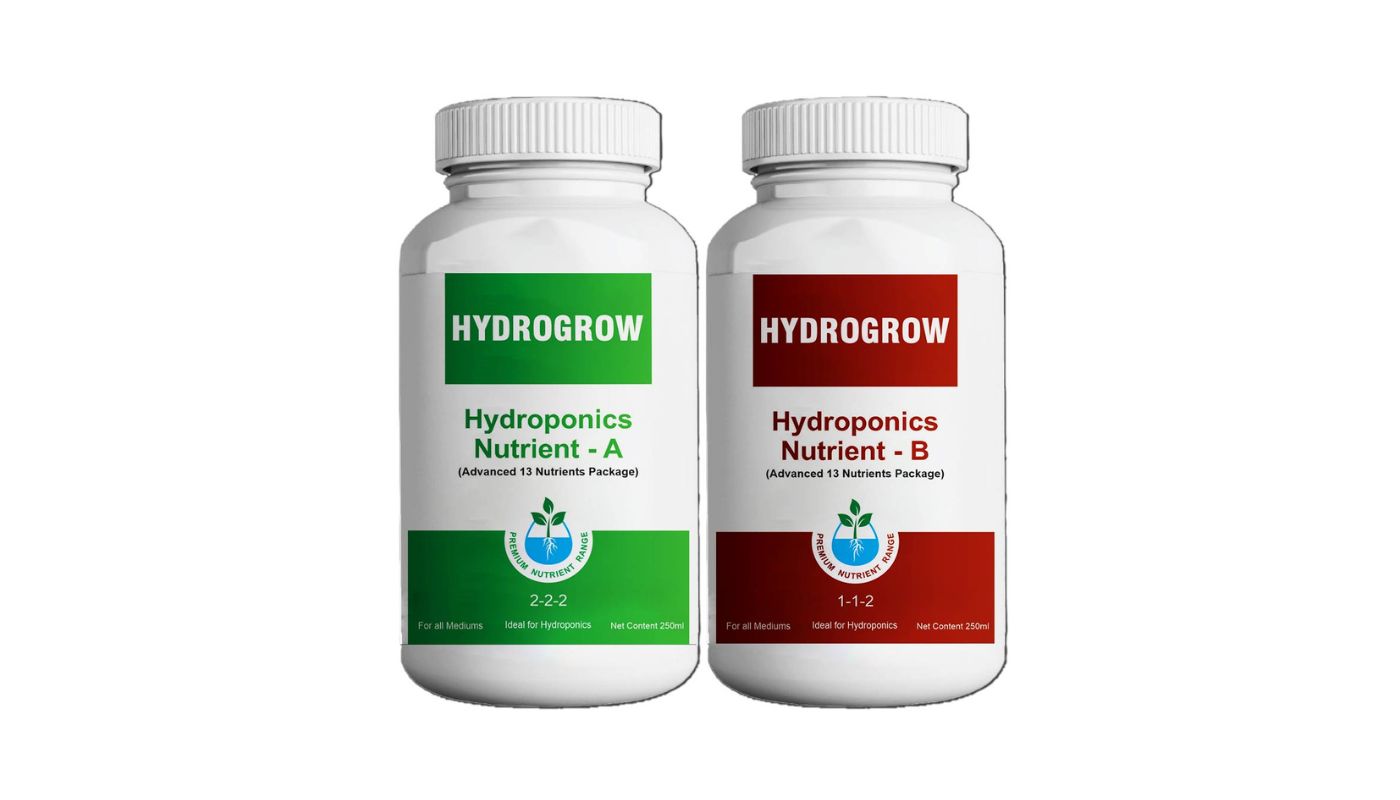Home>Gardening News and Trends>What Is Not A Primary Nutrient In Fertilizers?


Gardening News and Trends
What Is Not A Primary Nutrient In Fertilizers?
Modified: August 29, 2023
Discover the latest news on fertilizers and learn about the primary nutrients they contain. Find out which nutrient is not considered a primary component in fertilizer.
(Many of the links in this article redirect to a specific reviewed product. Your purchase of these products through affiliate links helps to generate commission for Chicagolandgardening.com, at no extra cost. Learn more)
Table of Contents
Introduction
Fertilizers play a vital role in modern agriculture by providing essential nutrients to plants. These nutrients help plants grow and develop, ensuring healthy yields and abundant harvests. Among the various components of fertilizers, primary nutrients are of utmost importance. They are key elements that plants require in large quantities to thrive. In this article, we will explore the primary nutrients found in fertilizers and their significance in plant growth.
Gardening enthusiasts, farmers, and anyone interested in plant nutrition can benefit from understanding the primary nutrients in fertilizers. By grasping the roles and functions of these nutrients, individuals can make informed decisions about their fertilizer choices, leading to optimal plant growth and improved productivity.
In the following sections, we will delve into the nutrient composition of fertilizers, define primary nutrients, discuss their main functions in plants, and identify which nutrient is not classified as a primary nutrient in fertilizer. So, let’s dig deeper and uncover the mysteries of these essential elements that nourish our plants!
Primary Nutrients in Fertilizer
Fertilizers contain a combination of nutrients that are essential for plant growth. These nutrients are classified into three main categories known as primary, secondary, and micronutrients. Primary nutrients are the nutrients that plants require in the largest quantities to maintain their overall health and vigor.
The three primary nutrients typically found in fertilizers are nitrogen (N), phosphorus (P), and potassium (K). These nutrients are often represented by their elemental symbols on fertilizer packaging as N-P-K ratios. For example, a fertilizer with the ratio 10-10-10 indicates that it contains 10% nitrogen, 10% phosphorus, and 10% potassium.
Nitrogen (N) is an essential nutrient necessary for the growth of leaves and stems. It is responsible for stimulating vegetative growth, promoting green foliage, and enhancing protein synthesis in plants. Nitrogen deficiency can result in stunted growth, yellowing leaves, and reduced overall plant health.
Phosphorus (P) plays a vital role in various physiological processes within plants. It aids in root development, flower and fruit formation, and the transfer of energy throughout the plant. Phosphorus deficiency can lead to poor root growth, weak stems, and reduced flowering and fruiting capacity.
Potassium (K) is crucial for the overall health and vigor of plants. It plays a significant role in enabling photosynthesis, regulating water movement within the plant, and enhancing disease resistance and stress tolerance. Potassium deficiency can result in weakened plant structure, reduced disease resistance, and overall reduced plant health.
By providing these primary nutrients in the appropriate amounts, fertilizers help ensure that plants have the necessary elements to achieve optimal growth and development. However, it is important to note that different plants have varying nutrient requirements. Therefore, it is essential to carry out soil tests or consult gardening experts to determine the specific fertilizer needs of different plant species or crops.
Now that we have explored the primary nutrients in fertilizers, let’s delve deeper into the nutrient composition of fertilizers and understand their significance in plant growth.
Nutrient Composition of Fertilizer
The nutrient composition of fertilizers refers to the specific amounts of primary, secondary, and micronutrients present in a particular fertilizer product. This composition is crucial as it determines the fertilizer’s effectiveness in providing the necessary elements for plant growth.
In addition to the primary nutrients nitrogen (N), phosphorus (P), and potassium (K), secondary nutrients such as calcium (Ca), magnesium (Mg), and sulfur (S) are also essential for plant growth. While these secondary nutrients are required in relatively smaller quantities compared to the primary nutrients, they play critical roles in various physiological processes within plants.
Calcium (Ca) helps in cell division and development, promoting strong cell walls and overall plant structure. Magnesium (Mg) is a key component of chlorophyll, the pigment responsible for photosynthesis, and plays a vital role in energy production within plants. Sulfur (S) is essential for the synthesis of amino acids and proteins, contributing to overall plant growth and development.
Additionally, fertilizers may also contain micronutrients, also known as trace elements, which are required by plants in very small amounts. These micronutrients include iron (Fe), manganese (Mn), zinc (Zn), copper (Cu), molybdenum (Mo), and boron (B), among others. Although these elements are needed in smaller quantities, they are critical for various enzyme functions and metabolic processes within plants.
The nutrient composition of a fertilizer can vary based on the specific needs of different plants or crops. Some fertilizers are specifically formulated for particular plant types, targeting their unique nutrient requirements. For example, fertilizers designed for acid-loving plants like azaleas and blueberries may have an increased concentration of iron and other micronutrients.
It is important to note that the nutrient composition of fertilizers is regulated by governing bodies to ensure their quality and effectiveness. Fertilizer manufacturers must adhere to specific guidelines and label their products accurately, indicating the nutrient percentages and composition. It is beneficial for gardeners, farmers, and plant enthusiasts to read and understand these labels to select the most appropriate fertilizer for their specific needs.
Understanding the nutrient composition of fertilizers allows growers to make informed decisions and provide their plants with the necessary elements for optimal growth and development. By supplying the right balance of primary nutrients, secondary nutrients, and micronutrients, fertilizers can significantly enhance overall plant health, yield, and crop quality.
Now that we have a good understanding of the nutrient composition of fertilizers, let’s move on to exploring the definition of primary nutrients and their main functions in plants.
Definition of Primary Nutrients
Primary nutrients are essential elements that plants require in large quantities for their proper growth and development. These nutrients are considered primary due to the significant roles they play in plant physiology and their high demand in plant tissues.
The three primary nutrients found in fertilizers are nitrogen (N), phosphorus (P), and potassium (K), also referred to by their elemental symbols. These nutrients are often referred to as macronutrients because plants need them in relatively large amounts compared to secondary nutrients and micronutrients.
Nitrogen (N) is a crucial primary nutrient that plays a vital role in many plant processes. It is a key component of amino acids, proteins, and chlorophyll, which are essential for plant growth and photosynthesis. Nitrogen is primarily responsible for promoting vegetative growth, enhancing the production of lush green leaves, and increasing plant vigor and size.
Phosphorus (P) is another essential primary nutrient that is involved in numerous plant functions. It is necessary for energy transfer and storage within plants, facilitating the conversion of light energy into chemical energy through photosynthesis. Phosphorus also contributes to root development, flowering, and fruiting, promoting overall plant health and reproductive capacity.
Potassium (K) is the third primary nutrient that plays a crucial role in plant metabolism. It helps regulate the movement of water within plant cells and is involved in various enzymatic processes. Additionally, potassium plays a significant role in enhancing disease resistance and supporting overall plant health and vigor.
The primary nutrients, nitrogen, phosphorus, and potassium, are essential for multiple aspects of plant growth and development. Each nutrient contributes to specific functions within the plant, but they also interact with one another and influence overall plant health and productivity.
Although primary nutrients are critical for plant growth, it is important to maintain proper nutrient balance. Excessive or insufficient amounts of primary nutrients can have adverse effects on plants. Imbalances can lead to nutrient deficiencies or toxicities, which can result in stunted growth, reduced yield, or even plant death.
Understanding the definition of primary nutrients is crucial for gardeners, farmers, and anyone involved in plant cultivation. By recognizing the significance of these nutrients and their specific roles in plant physiology, individuals can make informed decisions regarding fertilizer selection and application to ensure optimal plant nutrition and achieve thriving, healthy plants.
Now that we have established the definition of primary nutrients, let’s explore the main functions they perform in plants.
Main Functions of Primary Nutrients in Plants
The primary nutrients, nitrogen (N), phosphorus (P), and potassium (K), play essential roles in various physiological processes within plants. Understanding these functions is crucial for optimizing plant growth and ensuring healthy and productive crops.
Nitrogen (N) is involved in numerous plant functions, making it a key player in overall plant health. One of its primary functions is promoting vegetative growth. Nitrogen stimulates the production of proteins, enzymes, and chlorophyll, which are essential for photosynthesis. This results in lush green foliage and increased plant size and vigor. Furthermore, nitrogen is crucial for amino acid synthesis, which forms the building blocks for proteins, nucleic acids, and secondary metabolites.
Phosphorus (P) is vital for energy transfer and storage within plants. It plays a crucial role in the conversion of light energy into chemical energy during photosynthesis. Additionally, phosphorus is involved in the synthesis of ATP (adenosine triphosphate), the primary energy currency in cells. This energy is essential for various plant processes, including nutrient uptake, root development, flower formation, and fruit production. Phosphorus also contributes to the formation of DNA, RNA, and other essential molecules involved in cell division and growth.
Potassium (K) is involved in several plant metabolic processes and has significant physiological functions. One of its main roles is regulating water movement within plant tissues. Potassium ions help maintain turgor pressure in cells, which is essential for plant structure and rigidity. This helps plants withstand drought stress and improves their ability to take up nutrients. Potassium also plays a vital role in activating enzymes involved in photosynthesis, respiration, and protein synthesis. Additionally, it enhances disease resistance and stress tolerance, allowing plants to withstand environmental challenges.
The functions of primary nutrients are interdependent, and their availability in the right proportions is crucial for maintaining plant health and productivity. A deficiency or imbalance of one nutrient can negatively impact the utilization of others. For example, a lack of nitrogen can limit phosphorus uptake, hindering energy transfer and plant growth. Similarly, insufficient potassium can reduce nutrient uptake and overall plant vigor.
Optimizing the availability of primary nutrients is essential for proper plant nutrition. This is achieved through the application of fertilizers that provide a balanced N-P-K ratio, tailored to specific plant needs. Soil testing and plant tissue analysis can help determine nutrient deficiencies or imbalances, allowing for targeted and precise fertilizer applications.
Understanding the main functions of primary nutrients in plants allows growers to make informed decisions regarding fertilizer management. By ensuring an adequate supply of nitrogen, phosphorus, and potassium, growers can promote vigorous growth, maximize yield potential, and improve crop quality.
Now that we have explored the main functions of primary nutrients, let’s identify which nutrient is not classified as a primary nutrient in fertilizer.
Which Nutrient Is Not a Primary Nutrient in Fertilizer?
While nitrogen (N), phosphorus (P), and potassium (K) are considered primary nutrients in fertilizers, there are other essential elements that plants require for optimal growth. These elements are classified as secondary nutrients and micronutrients, and they also play crucial roles in plant physiology.
Secondary nutrients are required by plants in moderate amounts and are necessary for various metabolic processes. Calcium (Ca), magnesium (Mg), and sulfur (S) are the three main secondary nutrients that contribute to plant growth and development.
Calcium (Ca) is important for the development and strength of cell walls in plants. It helps regulate the movement of water and other nutrients within the plant, and it assists in cell division and growth. Calcium is necessary for proper root development and acts as a mediator in enzymatic reactions.
Magnesium (Mg) is an essential component of chlorophyll, the green pigment responsible for photosynthesis. It is involved in the synthesis of carbohydrates and supports enzyme activity in various metabolic processes. Magnesium plays a role in maintaining the structural integrity of cell membranes and is crucial for the synthesis of nucleic acids and proteins.
Sulfur (S) is necessary for the synthesis of amino acids, proteins, and enzymes involved in plant metabolism. It aids in chlorophyll formation and is essential for the efficient use of nitrogen by plants. Sulfur plays a role in maintaining favorable soil pH levels and enhances overall plant vigor and quality.
On the other hand, micronutrients, also known as trace elements, are required in very small amounts by plants. These include iron (Fe), manganese (Mn), zinc (Zn), copper (Cu), molybdenum (Mo), boron (B), and nickel (Ni). Despite being needed in trace amounts, these micronutrients are essential for various enzymatic and biochemical reactions within plants.
So, to answer the question, the nutrient that is not classified as a primary nutrient in fertilizer is calcium (Ca). Although it is still an essential element for plant growth, it falls under the category of secondary nutrients.
Understanding the roles of both primary and secondary nutrients, as well as micronutrients, is crucial for providing plants with a well-balanced nutrient supply. By considering the specific nutrient requirements of different plants and crops, growers can select fertilizers that cater to their plants’ needs, ensuring optimal growth, and ultimately, a successful harvest.
Conclusion
Fertilizers containing primary nutrients, such as nitrogen (N), phosphorus (P), and potassium (K), are essential for promoting healthy plant growth and maximizing crop yields. These nutrients play vital roles in various physiological processes, including photosynthesis, energy transfer, root development, and overall plant vigor. By providing these primary nutrients in the right proportions, growers can enhance plant health, increase productivity, and achieve superior crop quality.
It is important to understand that primary nutrients are not the only necessary elements for plant growth. Secondary nutrients, including calcium (Ca), magnesium (Mg), and sulfur (S), as well as micronutrients, such as iron (Fe), manganese (Mn), zinc (Zn), copper (Cu), molybdenum (Mo), boron (B), and nickel (Ni), also contribute to plant health and development.
When selecting and applying fertilizers, growers should consider the specific nutrient requirements of their plants or crops. Soil testing and plant tissue analysis can help identify nutrient deficiencies or imbalances, enabling targeted fertilization strategies to address specific plant needs effectively.
By maintaining a proper balance of primary nutrients, secondary nutrients, and micronutrients, growers can optimize plant nutrition and minimize the risk of nutrient deficiencies or toxicities. This holistic approach to fertilization promotes healthy plant growth, improves disease resistance, and enhances the overall quality and productivity of crops.
In conclusion, understanding the primary nutrients in fertilizers, their functions in plant physiology, and the complex interaction between primary nutrients, secondary nutrients, and micronutrients is essential for successful plant cultivation. By providing the right balance of essential nutrients, growers can ensure optimal plant nutrition, leading to thriving, productive, and healthy plants.









